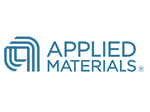Applied Materials Accelerates Chip Defect Review with Next-Gen eBeam System
- SEMVision™ H20 enables better and faster analysis of nanoscale defects in leading-edge chips
- Second-generation "cold field emission" technology provides high-resolution imaging
- AI image recognition speeds up defect detection and classification
SANTA CLARA, Calif., Feb. 19, 2025 (GLOBE NEWSWIRE) -- Applied Materials, Inc. today introduced a new defect review system to help leading semiconductor manufacturers continue pushing the limits of chip scaling. The company's SEMVision™ H20 system combines the industry's most sensitive electron beam (eBeam) technology with advanced AI image recognition to enable better and faster analysis of buried nanoscale defects in the world's most advanced chips.
eBeam imaging has long been an important tool for examining defects that are too small to be seen with optical techniques. Its ultra-high resolution enables analysis of the tiniest imperfections in a sea of billions of nanoscale circuit patterns. Traditionally, optical techniques are used to scan a wafer for potential defects, and then eBeam is deployed to better characterize these defects. In the emerging "angstrom era" – where the smallest chip features can be just a few atoms thick – it is becoming increasingly difficult to differentiate true defects from false alarms.
At today's most advanced nodes, optical inspection creates much denser defect maps, which can require as much as a 100X increase in the number of defect candidates delivered to eBeam review. Process control engineers increasingly need defect review systems that can analyze exponentially more samples while maintaining the speed and sensitivity required for high-volume production.
"Our new SEMVision H20 system allows the world's leading chipmakers to better separate the signal from the noise amidst massive amounts of data provided by inspection tools," said Keith Wells, Group Vice President of Imaging and Process Control at Applied Materials. "By combining advanced AI algorithms with the superior speed and resolution of our innovative eBeam technology, our system enables rapid identification of the smallest defects buried deep in 3D device structures, delivering faster and more accurate inspection results that can improve factory cycle time and yield."
Applied's new eBeam technology is critical for complex 3D architecture inflections required to manufacture logic chips at the 2nm node and beyond – including new Gate-All-Around (GAA) transistors – as well as the formation of higher-density DRAM and 3D NAND memories. Applied's SEMVision H20 defect review system has been adopted by leading logic and memory chipmakers for emerging technology nodes.
The new SEMVision H20 system leverages two significant innovations to classify defects with remarkable accuracy, while delivering results as much as 3X faster than today's most advanced techniques.
- Next-generation CFE technology: Applied's "cold field emission" (CFE) technology is a breakthrough in eBeam imaging that enables sub-nanometer resolution for identifying the smallest buried defects. Operating at room temperature, CFE produces a narrower beam with more electrons, thereby increasing nanoscale image resolution by up to 50 percent and imaging speed by up to 10X compared to conventional thermal field emission (TFE) technology. With SEMVision H20, Applied is introducing the second generation of its CFE technology, delivering even faster throughput while maintaining the industry's highest sensitivity and resolution. This faster imaging speed provides increased coverage across each wafer, allowing chipmakers to gather the same amount of information in one third of the time.
- Deep learning AI image models: SEMVision H20 uses deep learning AI capabilities for automatic extraction of true defects from false "nuisance" defects. Applied's proprietary deep learning network is continuously trained with data from a chipmaker's fab and sorts the defects into a distribution including voids, residues, scratches, particles and dozens of other defect types, enabling more accurate and efficient defect characterization.
Applied's SEMVision product family is the most advanced and widely used eBeam review system in the world. The new SEMVision H20 extends this leadership by combining next-generation CFE technology and advanced AI models to deliver faster and more accurate defect analysis, allowing chipmakers to accelerate chip development and make greater use of eBeam technology in high-volume manufacturing.
About Applied Materials
Applied Materials, Inc. (NASDAQ:AMAT) is the leader in materials engineering solutions used to produce virtually every new chip and advanced display in the world. Our expertise in modifying materials at atomic levels and on an industrial scale enables customers to transform possibilities into reality. At Applied Materials, our innovations make possible a better future. Learn more at www.appliedmaterials.com.
Applied Materials Contact:
Ricky Gradwohl (editorial/media) 408.235.4676
Liz Morali (financial community) 408.986.7977
A photo accompanying this announcement is available at https://www.globenewswire.com/NewsRoom/AttachmentNg/80511701-73c9-406d-8cb0-aeb0793e4497


